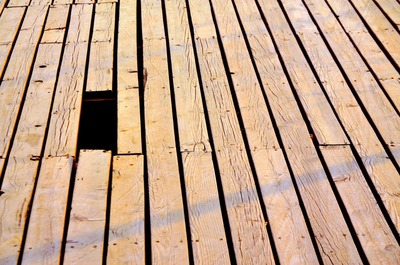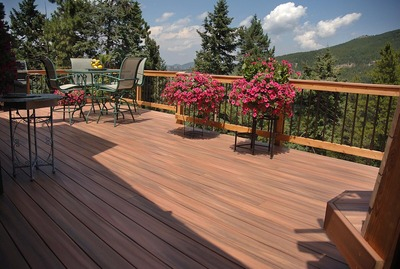When choosing the best materials for your decking, there are a few which to pick from. They all have pros and cons, but which material is the best for your decking?
Timber
Timber decking is a type of material which is widely used to build outdoor decks and patios. This material can be manufactured using a wide variety of hard and softwood, depending on the desired appearance and properties of the finished decking structure.
Pros
Timber decking has become a widespread alternative to hard terraces and patios. One of the strongest themes in contemporary landscaping is that of the ‘new garden’; whereby when outdoors in your garden and on your decking it is to be treated as an outside room.
In this context, when adding timber decking to your garden, is an excellent way of extending the living space of your home to the outdoors using timber materials to improve your home.
Timber decking is a highly flexible decking which provides extra social space that’s ideal for dining, entertaining, or just simply relaxing with your friends and family.
Regardless of the reasons for the addition of decking to your home, it’s one of the most enticing additions that can be made to your house.
Cons
When choosing to have timber for your decking, even though there are positives, there are also negatives which you have experience with timber decking.
When timber, it can scratch and stain easily which means that there is additional maintenance to prevent the scratches and stains in your decking. There are also possibilities which means that it can be prone to cracking and splintering.

Although timber is considered a renewable material it still involves cutting down trees, which involves the research and time to find the best sustainable and environmentally friendly materials.
Composite
Composite decking is lumber which is a material that is a mixture of wood fibre, plastic, and some type of binding agent.
These ingredients are put together to form a material that is denser, stronger, and heavier than wood alone, a wood-plastic composite which is beneficial for your decking.
Pros
When choosing composite, has become a material which is popular when choosing the decking for your home, especially for the positive which is the longevity of the composite material.
With composite decking materials, they can withstand the most severe array of weather conditions for decades without any additional treatment or protection which makes up for the longevity of the materials.
Another one of the positives of composite decking is the durability of the materials. Similarly to the longevity of the materials, the material is also durable which means that they don’t have to be stained, painted or treated throughout the lifespan of the decking.
When it comes to the design and creativity of the decking materials which are in your garden, the composite comes in a variety of colours and textures.
You can expect the colours of your new composite wood deck to last throughout the lifespan of the composite without refinishing because this product is so durable.
Cons
When it comes to the negatives of choosing composite decking, it is that the decking is permanently coloured to be able to avoid or reduce the maintenance which may occur.
This means that the colour, tint, and shade cannot be changed in your decking and will be permanent.
One of the main negatives point of choosing composite decking is the price of the decking compared to other alternatives, such as timber decking. But, with the increased longevity of the product and duration of the composite decking, this is decking which will last a long time.














